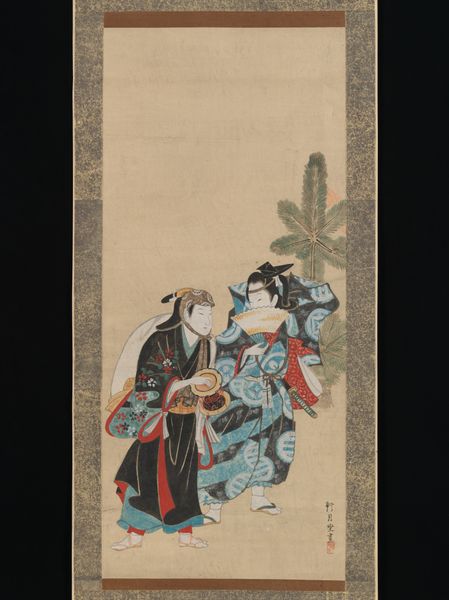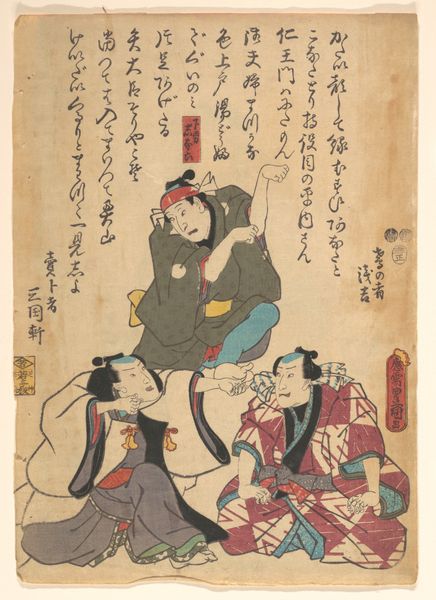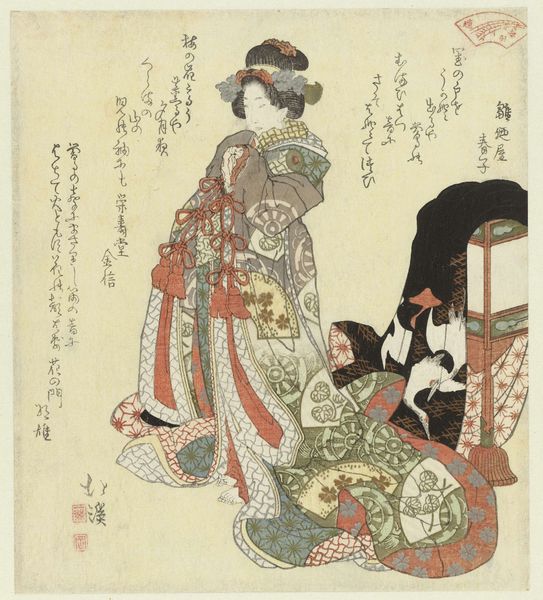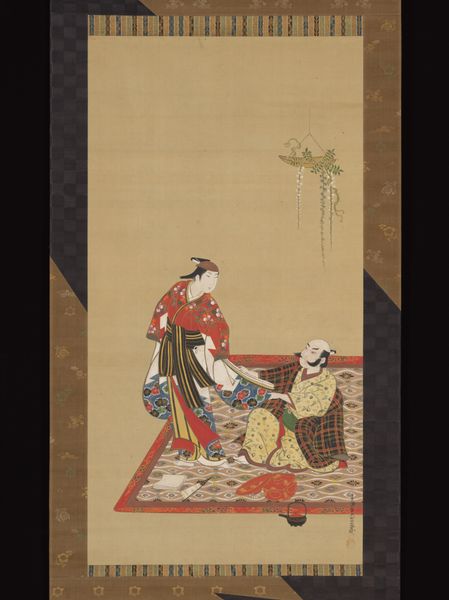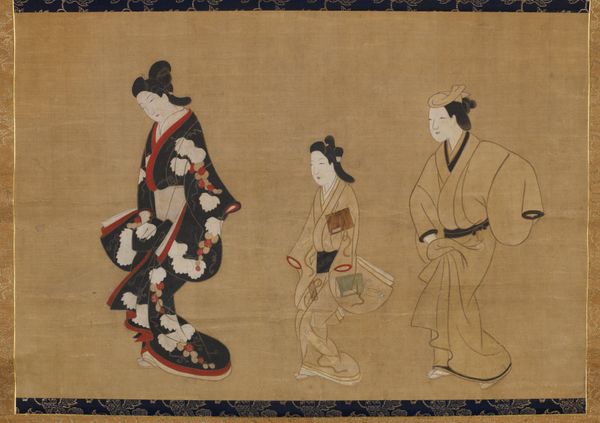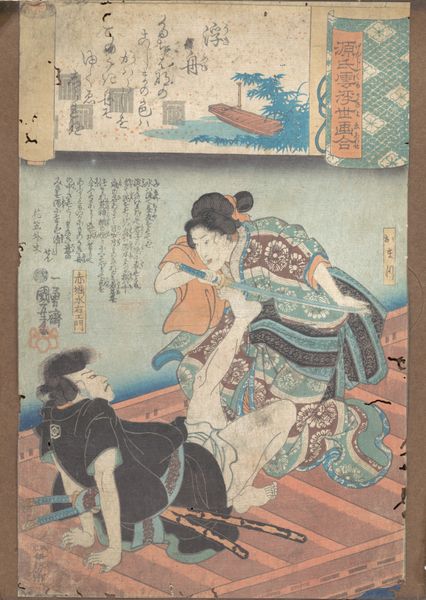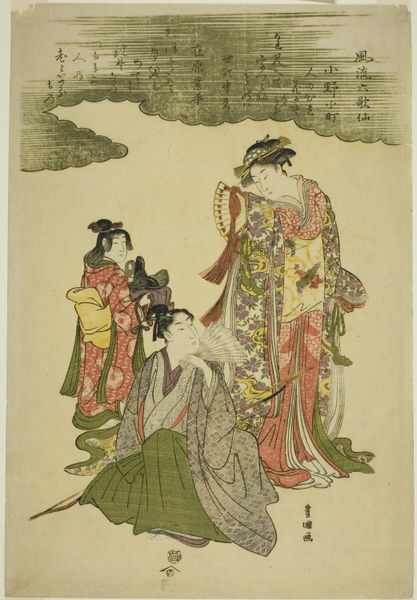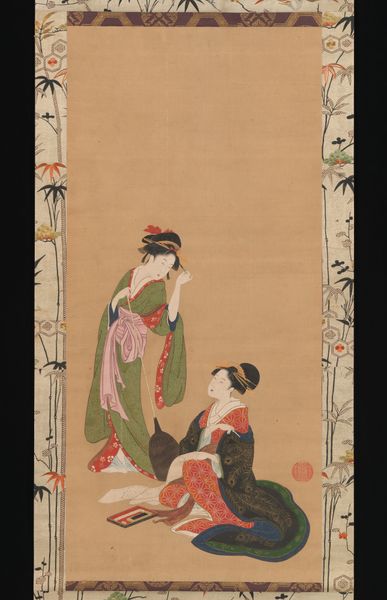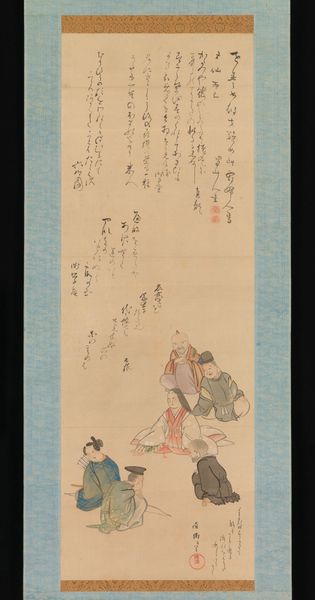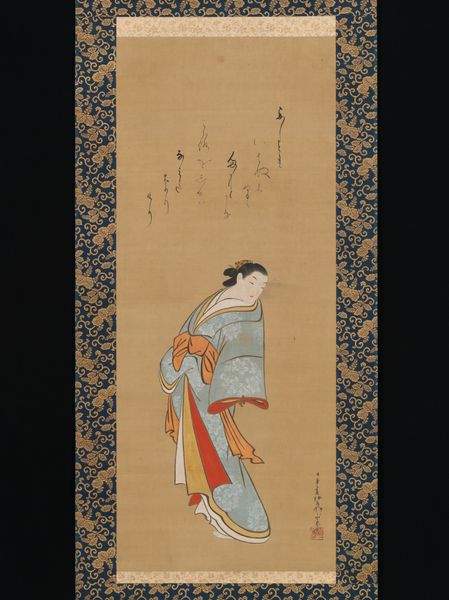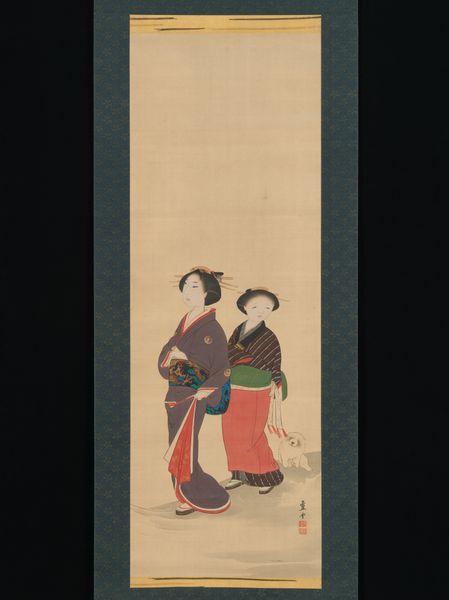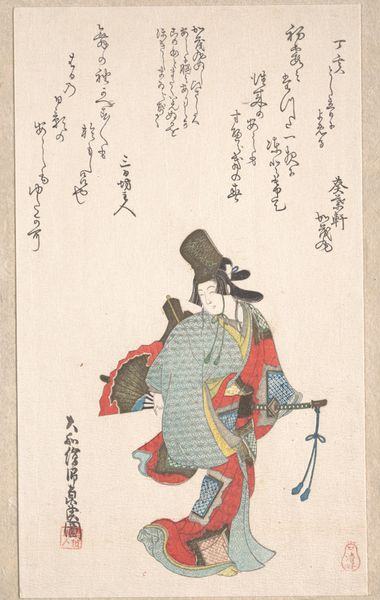
painting, textile, watercolor, ink
#
portrait
#
painting
#
asian-art
#
textile
#
ukiyo-e
#
figuration
#
watercolor
#
ink
#
genre-painting
Dimensions: Painting: 32 13/16 x13 1/16 in.; with mounting: 67 1/2 x 18 5/16 in.
Copyright: Public Domain
Curator: Before us, we have Torii Kiyonobu I's "Courtesan and Two Attendants," dating from around 1700-1710, presented here in ink and watercolor on paper. Editor: It has a beautiful, subdued quality, even melancholic. The figures seem suspended in this expanse of neutral space. I notice the elegant lines and delicate washes; they emphasize the passivity and the almost ephemeral presence of the figures. Curator: Exactly, this work exists firmly within the Ukiyo-e tradition. Torii Kiyonobu I played a key role in popularizing Ukiyo-e prints. Consider the historical context: we are seeing representations of the floating world – the pleasure districts – where status and artifice reigned. The courtesan, far from being a passive figure, occupies a powerful position within that world. Editor: Yes, it’s interesting to consider the layered politics of the imagery. We see not only an emphasis on a created world, a place where a person of less societal authority gains power by controlling how they are seen but also hints of consumerism by way of material objects. Curator: You’re right. The textiles themselves, rendered with meticulous detail, were indeed commodities. Kiyonobu and his contemporaries marketed Ukiyo-e to a burgeoning middle class, eager for a glimpse into this glamorous world. These artworks weren’t just representations; they fueled desire and shaped social aspirations. The image presents an intriguing blend of objectification and agency. How do you interpret the expressions on the attendants’ faces? Editor: The attendants project the societal values they are meant to uphold in order to support the illusion projected by the courtesan. They reveal the rigid social strata that define and enable the constructed power the central figure possesses. Overall, there's a quiet intensity here. Curator: Ultimately, Kiyonobu offers more than just pretty faces and fashionable clothes; his "Courtesan and Two Attendants" speaks to social performance and complex power dynamics of the era. It makes one think. Editor: I agree, by observing the nuances in imagery, the relationship between patron and consumer becomes further blurred; ultimately begging the question of whether images like this actually liberate the individual in society, or keep them imprisoned.
Comments
No comments
Be the first to comment and join the conversation on the ultimate creative platform.
